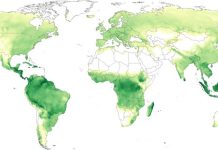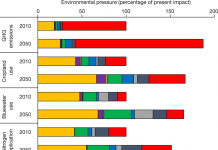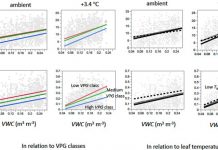【实验技术: 如何确定蛋白质结构】John R. Helliwell. How to Solve Protein Structures with an X-ray Laser. Science 2013 339(6116): 146-147
Abstract
For over a decade biologists have asked whether x-ray lasers can be used to determine the structures of biomolecules such as proteins. Such methods have the potential to allow structure determination from micro- or even nanoscale crystals but radiation damage can be extensive and data interpretation is fraught with difficulty. On page 227 of this issue Redecke et al. (1) overcome these problems to determine the room-temperature structure of a protein of importance to drug discovery.
【思考:气候研究】Eli Kintisch. Climate Study Highlights Wedge Issue. Science 2013 339(6116): 128-129
Abstract
A 2004 paper estimates that humanity could stabilize rapidly rising annual carbon emissions at 2004 levels by 2054 if it embarked on seven massive campaigns that would each prevent 25 billion tons of carbon emissions over 5 decades; the options included building a fleet of nuclear reactors and ending tropical deforestation. The authors dubbed each campaign a “wedge” after the angular shapes formed on a graph used to illustrate the concept. Now a new study has offered a provocative update to the saga. Colleagues call for a more audacious plan and calculate that at least a whopping 19 wedges—and perhaps as many as 31—will be needed to stabilize and then phase out carbon pollution.
【植物气孔对大气湿度减少的响应】Hubert Bauer Peter Ache Silke Lautner Joerg Fromm Wolfram Hartung Khaled A.S. Al-Rasheid Sophia Sonnewald Uwe Sonnewald Susanne Kneitz Nicole Lachmann Ralf R. Mendel Florian Bittner Alistair M. Hetherington Rainer Hedrich. The Stomatal Response to Reduced Relative Humidity Requires Guard Cell-Autonomous ABA Synthesis. Current Biology 2012 23(1): 53-57
Stomata are pores on the leaf surface bounded by two guard cells which







